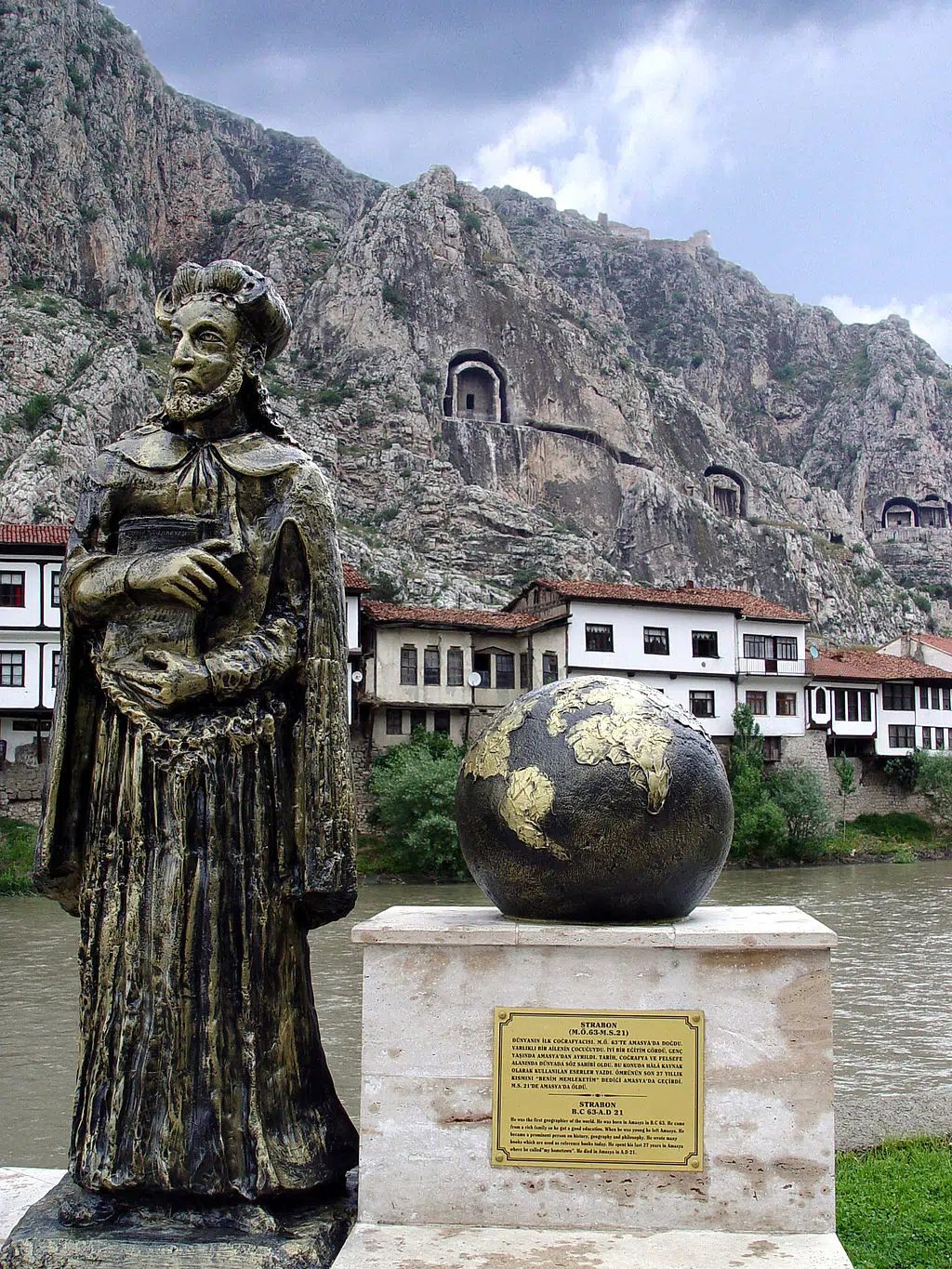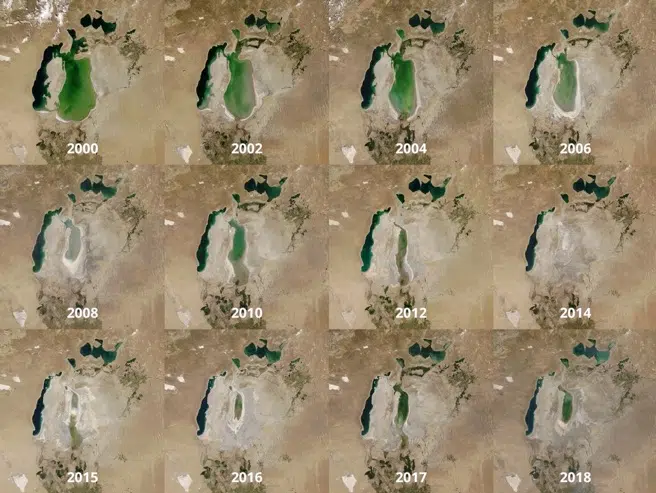
Alexander the Great’s empire spanned an enormous land mass, encompassing much of the Mediterranean and parts of the subcontinent, but there still exists a mystery around the Aral Sea, a now-dried up inland sea which historians are uncertain whether Alexander came across or not.
The primary source from which it could be deduced that Alexander the Great did come across the Aral Sea – located in Central Asia between Kazakhstan and Uzbekistan – comes from Strabo, the ancient Greek geographer, philosopher and historian.
The ancient Greek geographer’s writings suggest that Alexander knew about a large body of water to the northeast of the Caspian, which some scholars believe is a reference to the Aral Sea. But the description and the geographical detail provided by Strabo are far from conclusive, which has led to lots of uncertainties among historians.
Some historians claim that Strabo’s description may refer to different bodies of water, or even hyperbolised accounts of small lakes. One historian, J.R. Hamilton, wrote a journal article titled ‘Alexander and the Aral’ in which he expounds upon the debate over whether Alexander the Great was aware of the existence of the Aral Sea.

In his paper, the historian attempts to piece together the evidence and reach a conclusion, however it seems that the subject remains one of historical interpretation, and it is not conclusively understood whether Alexander knew of the Aral Sea’s existence.
Strabo’s writings relied on earlier sources, which are no longer extant, making interpretation of his work very challenging. He writes about a larger body of water near the caspian, but his descriptions are ambiguous. The Aral Sea and the Caspian Sea are separate bodies of water, with the former lying to the northeast of the latter.
The ancient geographers did not possess the same level of cartographic precision that we have today, and so potential inaccuracies or over-generalization are to be expected in their accounts.
Hamilton’s examination of the subject takes into account not only Strabo’s work but also other records and the logistical and strategic movements of Alexander the Great throughout his campaigns. If the great military tactician knew about the Aral Sea, it would likely have played a role in his military plans.
The nature of Alexander’s missions in Central Asia, especially the movements and aims of his armies, are deeply examined by Hamilton to find clues about his geographic knowledge.
However, despite the historian’s efforts, the article fails to reach a definitive answer. Rather, it sheds light on the complexities of historical interpretation and the difficulties of drawing conclusions from fragmented and often contradictory sources.
Strabo as a Source for Whether Alexander the Great Knew of the Aral Sea
In his article, Hamilton makes mention of Sir William Tarn, who, basing his case mainly on Aristotle, Meteorologica, and Strabo, argued that Alexander knew of the existence of the Aral Sea.
According to Hamilton, “Tarn’s conclusion was soon challenged by Professor Lionel Pearson, who disagreed in particular with Tarn’s interpretation of the passage in Strabo. But, although he undoubtedly succeeds in showing that some of Tarn’s arguments are no valid, Pearson fails, as it seems to me, to disprove his main contention.”
Hamilton goes on to write that Pearson misunderstand the line of Strabo’s argument and is led to propose an unnecessary emendation of the text.
Hamilton writes, “First then, the Strabo passage. On his expedition, Alexander had not advanced beyond the river Jaxartes (Syr Darya – in Asia), except for a brief foray across the river. He had left unconquered, as Strabo says, a large part of Asia between the Caspian Sea and the river Tanais (Don), the established boundary between Europe and Asia.”
He continues, “But, according to Strabo, some of the historians of Alexander devised a stratagem which enabled them to claim that the king had conquered the whole of Asia. They combined Lake Maeotis (Sea of Azov), which receives the Tanais, with the Caspian, which they also called a lake, saying that the two were connected and that each formed part of the other.
“We may note at this point that Strabo believed that the Jaxartes flowed into the Caspian. In fact, it has always flowed into the Aral. Strabo then goes on to relate the part played in the stratagem by Polycleitus, a minor historian and geographer who accompanied Alexander’s expedition.”
This is where the debate has come to at present, still yielding diminishing returns. However, we do know that Alexander the Great’s empire never extended to the Central Asian region, where the Aral Sea is located.
What Happened to the Aral Sea
The Aral Sea was an endorheic lake which lay between Kazakhstan to the north and Uzbekistan to the south, which began to shrink in the 1960s and had mostly dried up by the 2010s.

It is considered an example of ecosystem collapse, with the ecosystems of the Aral Sea and the river deltas feeding into it having been nearly destroyed, mostly because of the salinity being much higher than ocean water.
The dying sea has left in its place enormous plains covered with salt and toxic chemicals from weapons testing, industrial projects, and runoff of pesticides and fertilizer. Because of the shrinking water source and worsening water and soil quality, pesticides were increasingly used from the 1960s to raise cotton yield, which further polluted the water with toxins (e.g. HCH, TCCD, DDT). Industrial pollution also resulted in PCB and heavy-metal contamination.
Due to the lack of water left in the Aral Sea, concentrations of these pollutants increased dramatically both in the remaining water and in the dry beds. This resulted in wind-borne toxic dust that spread quite widely.
People inhabiting the lower regions of the river basins and former shore zones ingested pollutants through drinking local water and inhaling contaminated dust.
See all the latest news from Greece and the world at Greekreporter.com. Contact our newsroom to report an update or send your story, photos and videos. Follow GR on Google News and subscribe here to our daily email!



